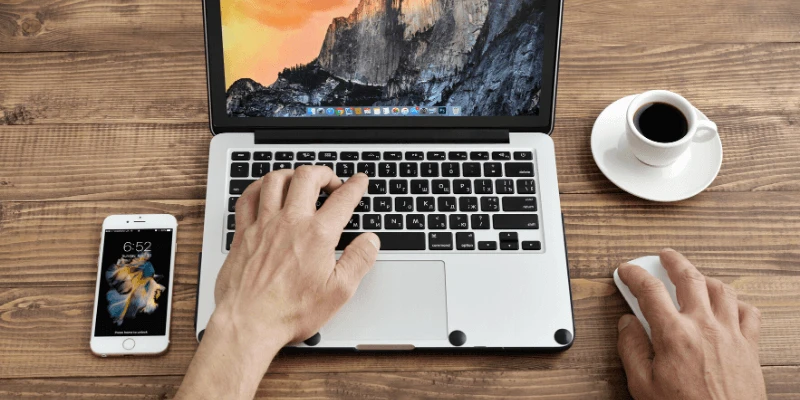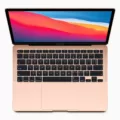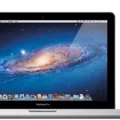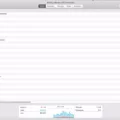Are you experiencing mouse lag on your MacBook? This frustrating issue can significantly hamper your productivity and hinder your overall user experience. In this article, we will explore the possible causes of mouse lag on a MacBook and provide some practical solutions to help you resolve this problem.
1. Dirt or debris on the mouse sensor:
One common cause of intermittent mouse lag is the presence of dirt or debris on the mouse sensor. Over time, dust and grime can accumulate on the sensor, affecting its performance. To fix this issue, you can try cleaning the mouse sensor using a soft cloth or compressed air. Gently wipe the sensor or blow air into it to remove any dirt or debris that might be causing the lag.
2. Dirt inside the scroll wheel:
If you are experiencing lag specifically when scrolling, the issue may be due to dirt or debris inside the scroll wheel. Similar to the mouse sensor, the scroll wheel can become clogged with dirt, leading to laggy scrolling. To address this problem, you can clean the scroll wheel by using a toothpick or a small brush to remove any accumulated dirt. Be careful not to apply too much pressure or cause any damage to the scroll wheel.
3. Water damage:
In some cases, if your MacBook has recently been exposed to water or any other liquid, it could result in mouse lag. Water damage can affect the internal components of your laptop, including the trackpad and mouse circuitry. If you suspect water damage, it is advisable to have your MacBook inspected and repaired by a professional technician.
4. Loose trackpad ribbon cable:
Another possible cause of mouse lag on a MacBook is a loose trackpad ribbon cable. The ribbon cable connects the trackpad to the motherboard, and if it becomes loose or disconnected, it can cause issues with the mouse’s responsiveness. You can try opening up your MacBook and reseating the ribbon cable securely to see if it resolves the problem. However, if you are not comfortable doing this yourself, it is best to seek assistance from a professional.
5. Faulty trackpad:
Lastly, if none of the above solutions work, it is possible that your MacBook’s trackpad itself is faulty. Over time, trackpads can wear out or develop internal issues that result in mouse lag. In such cases, replacing the trackpad with a new one may be necessary. You can find replacement parts online and follow tutorials to replace the trackpad yourself or seek professional help for this task.
Mouse lag on a MacBook can be caused by various factors, including dirt or debris on the mouse sensor or inside the scroll wheel, water damage, a loose trackpad ribbon cable, or a faulty trackpad. By following the solutions mentioned above, you can troubleshoot and resolve the mouse lag issue on your MacBook, restoring smooth and responsive mouse functionality.
Remember, it’s essential to take proper care of your MacBook and keep it clean to prevent such issues from occurring. Regularly cleaning your mouse and maintaining a clean environment around your laptop can go a long way in ensuring smooth and efficient usage.

Why Does Your Mouse Feel Sluggish?
There can be several reasons why your mouse feels sluggish. Some possible causes include:
1. Low battery: If you are using a wireless mouse, a low battery can cause the cursor to move slowly or intermittently. Try replacing the batteries and see if the issue improves.
2. Connectivity issues: If you are using a wireless mouse, check if there are any obstructions between the mouse and the receiver. Objects like walls or other electronic devices can interfere with the signal, causing the mouse to respond slowly. Ensure that the receiver is plugged into a USB port properly.
3. Driver issues: Outdated or corrupted mouse drivers can also cause sluggishness. Make sure you have the latest drivers installed for your mouse model. You can usually find these on the manufacturer’s website.
4. Hardware issues: Over time, dust and dirt can accumulate on the sensor underneath the mouse, affecting its performance. Cleaning the mouse can help resolve this issue. Additionally, a faulty mouse cable or worn-out mouse feet can also cause sluggishness. Check for any physical damage and consider replacing the mouse if necessary.
5. System resources: If your computer is running low on memory or processing power, it can impact the responsiveness of your mouse. Close any unnecessary programs or processes that might be consuming system resources.
6. Mouse settings: Check your mouse settings in the operating system or mouse software. If the cursor speed is set to a low value, it can make the mouse feel sluggish. Adjusting the sensitivity or acceleration settings to your preference can help improve the mouse’s responsiveness.
Remember to try these troubleshooting steps one by one to identify the root cause of the sluggishness. If none of these solutions work, it may indicate a more serious hardware or software issue, and you may need to seek further technical assistance.
Why is Your Trackpad Mouse Lagging?
The trackpad mouse on your laptop may be lagging due to several reasons:
1. Driver Issues: Outdated or corrupted drivers can cause the trackpad to lag. Make sure you have the latest drivers installed for your trackpad. You can visit the manufacturer’s website to download and install the appropriate drivers.
2. System Overload: If your laptop is running multiple applications or processes simultaneously, it can put a strain on the system resources, leading to trackpad lag. Try closing unnecessary programs or restarting your laptop to free up resources.
3. Hardware Problems: Physical damage or wear and tear can affect the performance of the trackpad. Check for any visible damage or loose connections. If the trackpad is physically damaged, you may need to replace it.
4. Software Conflicts: Conflicts between different software or drivers can cause the trackpad to lag. It’s a good idea to check for any recently installed software or updates that may be causing the issue. Try uninstalling or disabling any suspicious software to see if it resolves the problem.
5. Battery Issues: If your laptop’s battery is running low, it can affect the performance of various components, including the trackpad. Ensure that your laptop is sufficiently charged or connected to a power source.
6. System Updates: Sometimes, system updates can cause compatibility issues with the trackpad driver or software. Check for any pending system updates and install them to see if it resolves the lagging issue.
It’s important to note that these are general troubleshooting steps, and the exact solution may vary depending on your laptop’s make and model. If the problem persists, it may be best to consult the manufacturer’s support or a professional technician for further assistance.
Conclusion
If you are experiencing mouse lagging issues on your MacBook, it is important to consider a few potential causes and solutions. Intermittent or sporadic lagging may indicate dirt covering the infrared (IR) sensor under the mouse, while lagging during scrolling could be due to dirt inside the scroll wheel. Thus, cleaning your mouse is often a recommended troubleshooting step to resolve these issues.
However, if the problem persists even after cleaning, it may be necessary to explore other factors. Water damage to the laptop’s internal components, including the mouse sensor or trackpad, could also result in mouse lag. In such cases, thorough cleaning of the laptop’s surface may not be sufficient, and professional assistance may be required to assess and repair any water damage.
Additionally, a loose ribbon cable connecting the trackpad or a faulty trackpad itself can also cause mouse lagging. In these situations, it is possible to find replacement parts online and easily replace them to resolve the issue. This solution may require some technical expertise or professional assistance, depending on your comfort level with repairing hardware components.
Mouse lagging on a MacBook can be caused by various factors, including dirt covering the IR sensor or scroll wheel, water damage, or faulty trackpad components. Cleaning the mouse is a good initial step, but if the problem persists, further investigation and potential repairs may be necessary.








